Enrique Agudo on Animating Vibrant Queer Mythologies in ‘The Nomad’ and Beyond
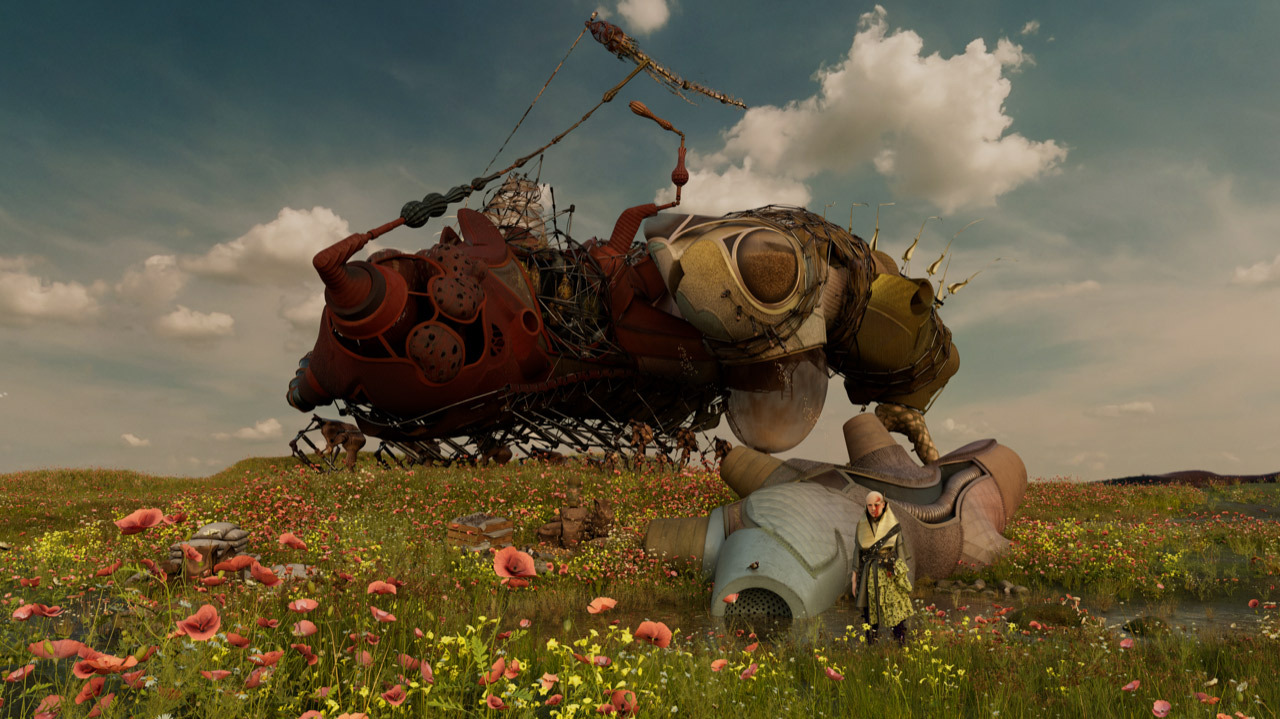
Enrique Agudo is a new media artist. Contemporary culture is infused with digital imagery, and Agudo’s work focuses on the pattern recognition of these digital indexes and shedding light on how they affect the way we behave, we see the world through digital interfaces and by extension, that is how we unavoidably understand ourselves. Agudo is the Creative Director behind The Pantheon of Queer Mythology, a VR short film that premiered at Tribeca Film Festival 2020, Cannes VR, FIVARS Film Festival, or Geneva Film Festival in 2020. Enrique is a graduate of the Architectural Association (RIBA Part I), IE University (BArch (Hons)), and SCI-Arc (M.Arch 2 + MA Fiction and Entertainment ‘19). After working as Studio Director for Daniel Canogar’s Los Angeles Office, Agudo continues to use immersive and experimental digital media as the tools to question and challenge anthropological discourse around identity through new forms of mythology and his work has been shown at the Victoria & Albert Museum in London, Serrería Belga in Madrid, and his recent project Ipseity was just exhibited in Vellum Los Angeles in the artist’s first solo show in April 2023.
We spoke to Enrique about this work on his film The Nomad, an animated short created by Agudo in collaboration with Miwa Espinoza and Michelle Recio. Depicting a vessel traveling across the American landscape that houses a matriarchal clan with the purpose of ‘rewilding’ and biodiversifying its surroundings, The Nomad “is more than a home, a tool, a form of transport—it portrays the notion that we are guests in a land that cannot be owned.”
“In our world,” shares Agudo, “plants shape human existence, and The Nomad reveals a whimsical technological mediation between us and our vegetal environment. Human relationships to nature are molded by a culture whose definition of ‘nature’ is biased around homophobia, classicism, sexism, racism, and xenophobia to justify its exploitation. Thus, The Nomad presents a speculative illustration of the potential for Queer environmentalism.”
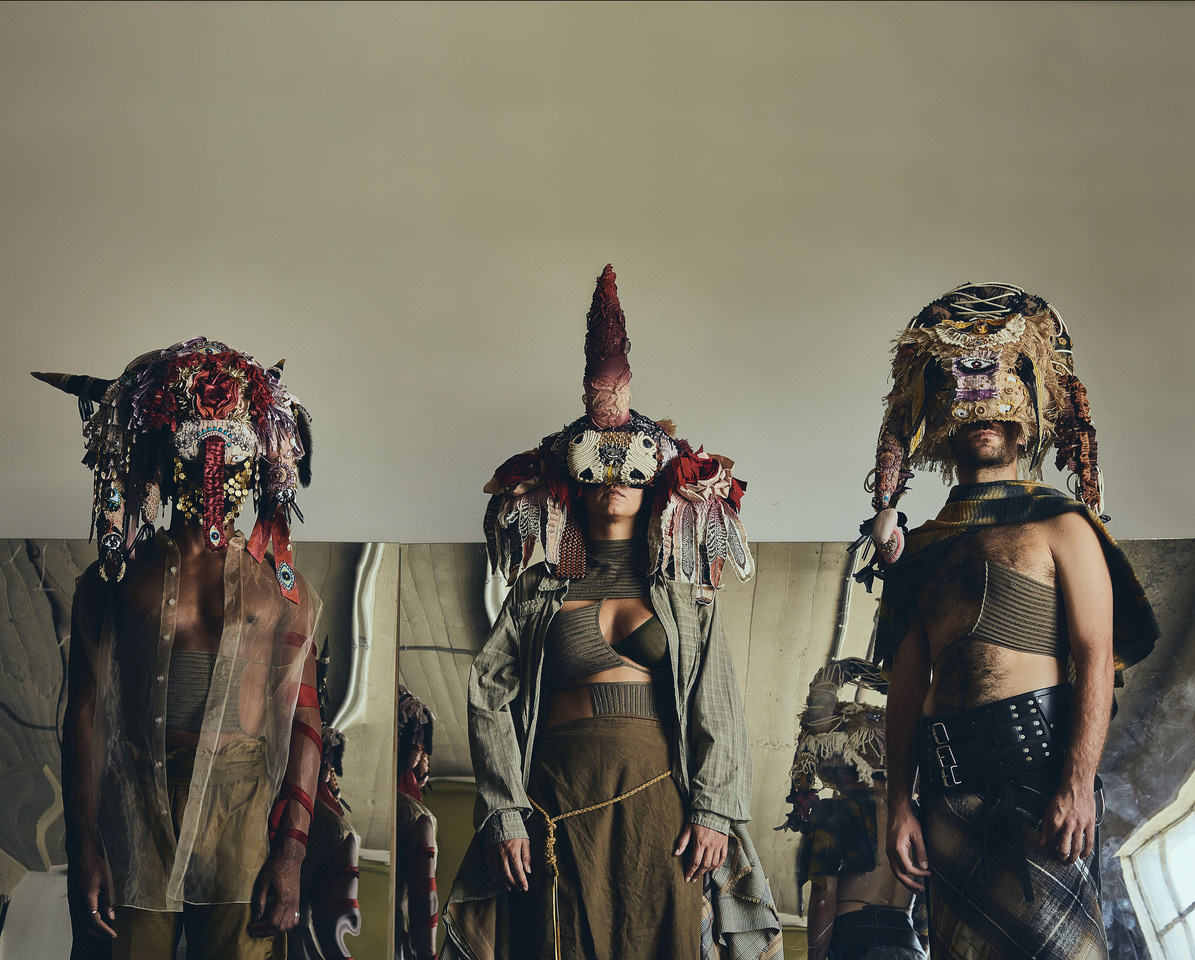
Thank you Enrique for speaking with us! About the depth and the detail with which you approach your subject matter: it seems that you do a lot of deep research when it comes to ritual and technology and symbolism with religion—these seem to be things that you're personally interested in, as well as in your practice. In all of these diverse disparate elements that you're marrying together in your work, what are some of the most surprising discoveries that you've made—both personally as an artist—when bringing all of these different things together?
It's maybe not as surprising, because I think we can all relate to the idea. But I think that humans, as a species, we are social beings, we are cultural beings. We have a way of creating ritual and practice and tradition around things we look up to, things we aspire for, things that make us feel, remind us that we're human. That's why religion is central to the human experience in some ways, because the relationship between spirituality and religion and culture is very tied into having a human experience. Sometimes to be reminded of what is human is simply to have something that makes you conscious of the experience that you're having.
It's almost like having to go outside to sort of be able to look in. And I'm from Spain, in Spain, we have a deep tradition with religion and religious celebration. I'm not particularly religious. But certainly, there's a lot of folklore attached to religion that I find really fascinating because there's a lot of effort and energy and resources go into the production of these cultural references. Whether they are processions in Holy Week or buildings throughout the world, relating to all kinds of spiritual practices, religions, and organizations.
I find that because I have a background in architecture, I often see that, in architecture, we're very quick to celebrate those cultural patterns, whether it's in the form of ornament, or form, or the design of a building is often a reflection of the time and the place that we live in, or what the culture of that place is at a certain point in time. What strikes me often is that we don't have that kind of relationship with technology. Because in the past 50 years, we've discovered a new era of technological advancement, that has, in a way, globalized the world, and in a way created a new kind of aesthetic that is nearly about technology. It's not attached to culture. It's not attached to ritual. It's attached to pragmatism, capitalism, economic profit, efficiency, and energy management or mismanagement, depending on how we see it.
And what I think, and a lot of what I do in my practice, is I try to bridge the way that we relate to technology in a way that we would relate to any sort of element in our culture that is embedded with the meaning of what it is to be human in a certain time and a place. I often think about what are the Holy Week processions for the technological age? I often think of the power that virtual reality or that augmented reality has for the expansion of our experience. And because science fiction has led us to believe, in the past 100 years, that the future of technology is the demise of humanity. And understandably, the culture that we're in, that it's much more interesting if we see technology as a tool to expand our culture instead of reduce it.
Speaking to the research and world building and narrative building that you're doing, can you talk about the process of the research that you're doing to the more specific elements? Like the cultural figures that you're referencing, the names, the dress, the behavior, the spaces that you're designing for these characters to live inside?
I am someone who has always been, since I was a young boy, obsessed with fashion. I've always felt that I was an outsider in fashion, and being an outsider in fashion has always, like, made me want to absolutely know everything that I can about fashion in order to validate my place in fashion. And even doing so really didn't feel validating. And that specific dynamic I feel is a myth that I've created for myself. And it's a myth that fashion, as an industry, uses for exploiting a customer, and equally to create a fantasy that expands our own vision for ourselves into the products that they're presenting to us.
It's a really interesting reference that a lot of people I know can identify with, but it replicates in many ways throughout our entire culture. And I think that as I mentioned earlier it happens in religion, it happens in politics, certainly. It happens in technology, too. Certainly, within the queer community, and with queer identities, that phenomenon has always been the case. Because growing up a gay boy, inner struggles kind of come to terms with your identity. That process is difficult, but mostly it's a process that doesn't happen naturally, because there are so many factors inputting into it.
The main differentiator that I find that has given me a tool to kind of be able to distinguish the writing on the wall is that there is an irreverence that you inevitably have to catch on to in order to be able to deal with constant homophobia and insults and all the rest. And so that irreverence, in a way, is a little bit like the Matrix, and you're able to catch on to those markers or those indexes that tell you that you're in the Matrix, that nothing is as it seems, and that there's all these patterns happening with algorithms, or we call them social values or cultural values.
My queer identity has definitely been an incredible tool. And obviously, what I tried to do with my work is try to pick up those things and try to relate the issues of identity and the issues of technology, and try to make beautiful imagery or beautiful experiences, or beautiful worlds or beautiful stories that illustrate the ironies and the contradictions and the irreverence that I'm talking about. Hopefully in a compelling way, and hopefully in a way that someone who has a completely different experience might not be exact same of what I put out there, but that certainly raises questions and sort of leaves them wondering or raising an eyebrow like, "Mm, what was that about?"
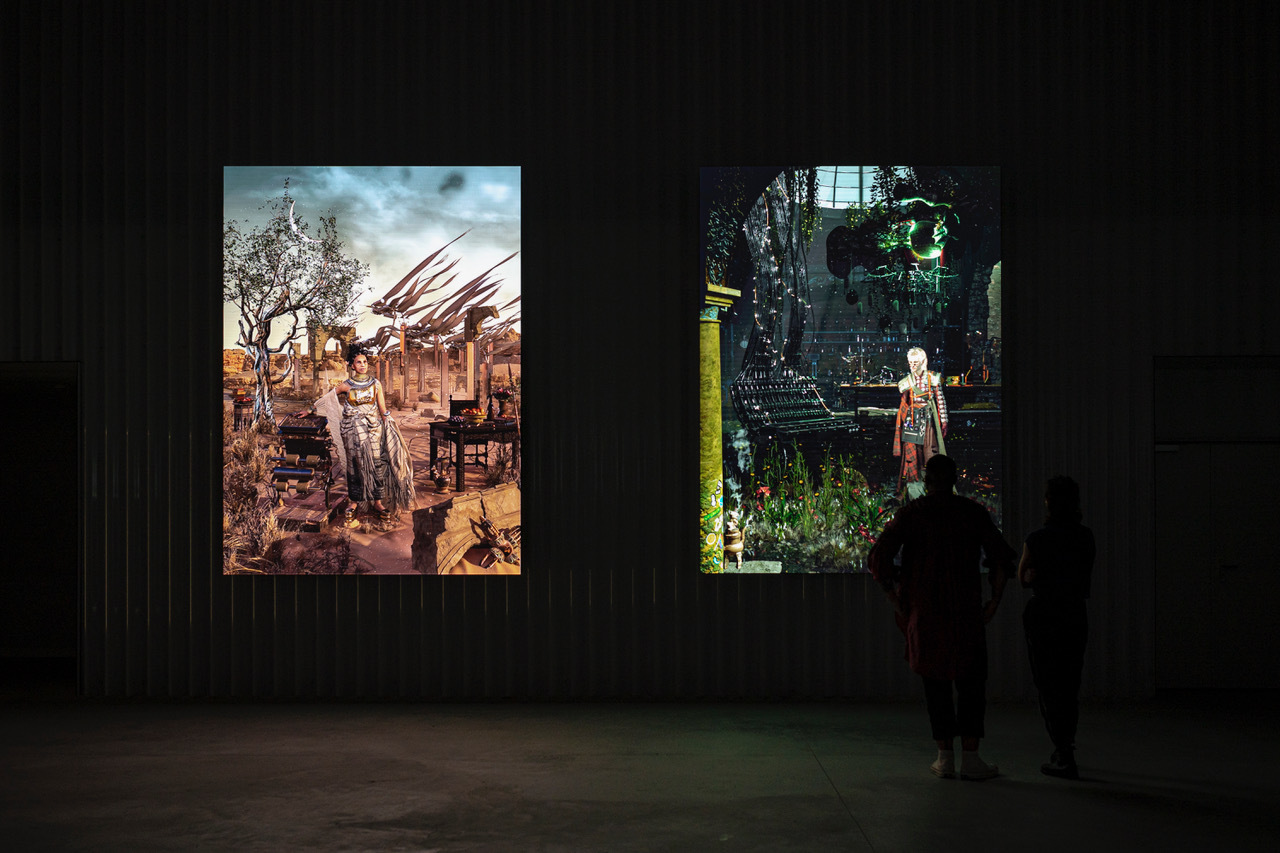
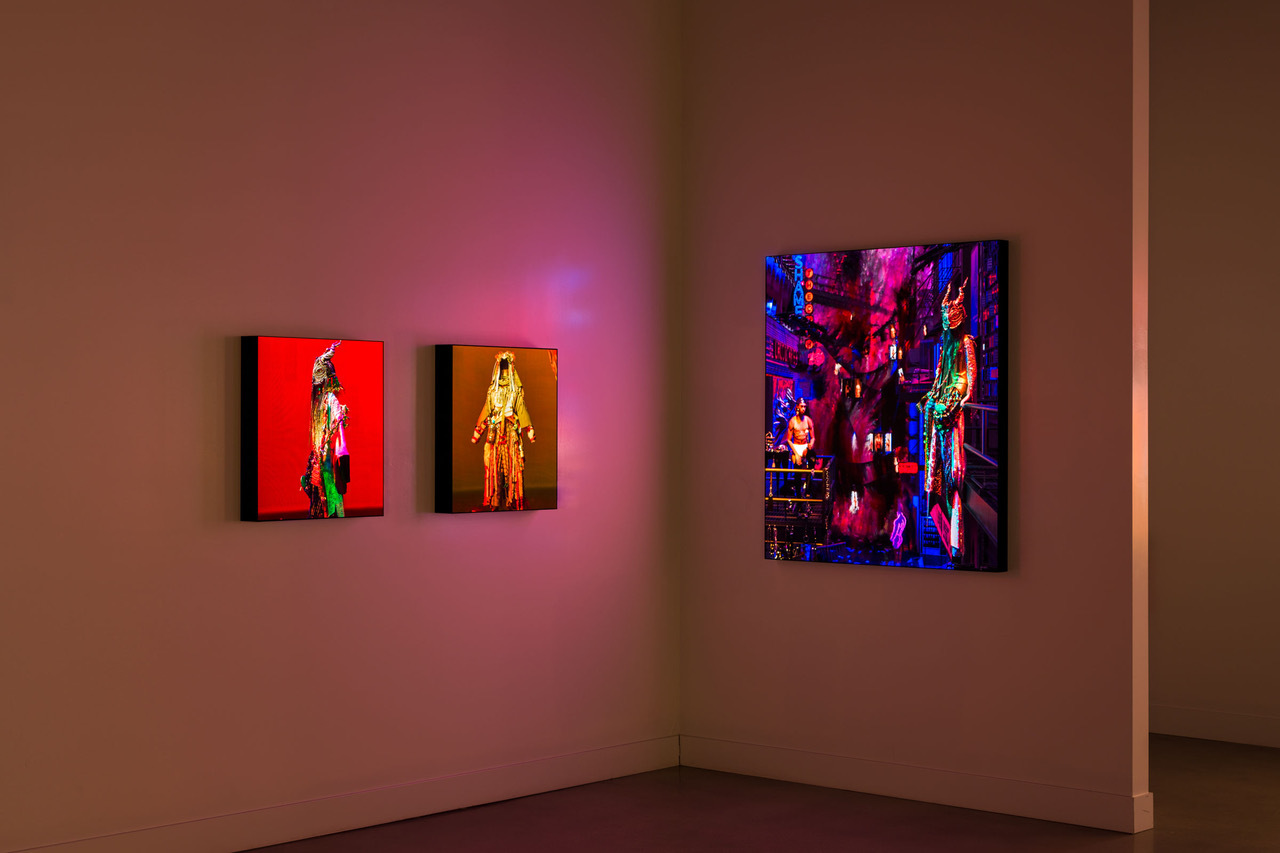
What are the references that inform your work?
I think that queer culture is a constant reference for me. I mean, Pedro Almodovar is a huge inspiration for me because I feel he is a very masterful artist in capturing the irreverence and the contradictions of Spanish culture and being able to turn them on their head with a sort of almost tongue in cheek and poignant way. And that is irreverent and funny, at the same time, heavily dramatic and masterfully tied together.
So obviously Almodóvar is a big reference, but I have a bunch of tattoos on my body, and a lot of them are queer icons of mine. Sylvia Rivera, Francis Bacon, David Hockney, I think because I'm queer, and because a lot of my work relates with identity, I often think that queer artists and figures in the past offer me the tools they had to employ to their struggles to figure the indicators, the pattern recognition of these things that we're doing. And obviously, they're just a massive reference for me to create what I do.
There is also definitely a tongue in cheek influence, or, as you mention, an irreverence that you’re playing with. What role does that fulfill in your work? For example, a Grindr-laden, Blade Runner-esque scene has a specific linguistic and cultural quality to it.
The interesting thing about Grindr is that there's such a short circuit between the opening of the app and having a conversation, that the interface that Grindr has allows for all the myths to happen in the most blatant ways. It's almost like Pandora's box. There's monsters and goblins and vampires of every kind. And it's fascinating. And oftentimes terribly scary, and at the same time, kind of hot.
There's a lot of people that aren't capable of grasping the irreverence that happens, because of their own limitations, because of trauma, because of growing up so incredibly minimized, that when they suddenly get out into the world, they don't have the tools to be able to capture their value and to be able to put weight onto their place in this planet. And therefore, they sort of turn to the complete opposite where they become or they fall victims of an equally imbalanced queer community.
You employ image, language, atmosphere in your films as an allegory. Can you speak to that?
The process of grasping what those markers of what that irreverence is, certainly, in my experience, and through art, has always been through narrative, has always been through allegory. You learn about social values when you're a child through bedtime stories, and the bedtime stories are never really about the stories themselves, they're about the value or the lesson that they have behind them. That's how we grow up as humans. That's how we understand social patterns. Ultimately the complexity of having an identity as a human is an ongoing process of unveiling layers and layers and layers. And when you think you're done, or you think you've achieved a milestone, you go through a breakup, and suddenly, everything is up in arms again, and you feel that you don't know shit about yourself. Which is insanity, because that's not true.
I often think that we are all lost souls, some have it more difficult than others. And in that, I think that I'm incredibly privileged. However, I also think that the only way that we can grasp on to a better version of ourselves is if we are inspired by stories, by images, by experiences, that challenge who we are, and that, at least, if they make you laugh, or they give you a moment of a deep breath or a sigh, they automatically shift the energy that you bring to your life, even if it's just for a second.
And I think that's really important, certainly in the times that we live in. But certainly what I try to do with my work is if in my film you saw a beautiful image, or you saw a beautiful theme in virtual reality, that captured your mind for three minutes, or for two minutes, and it sort of allowed you to evade yourself for a moment. And then when you return, that comes with you. Trying to do that is manageable, because I don't claim to want to change the world. But I know that that kind of experience, which has happened to me, I try to do so that other people can identify with that.
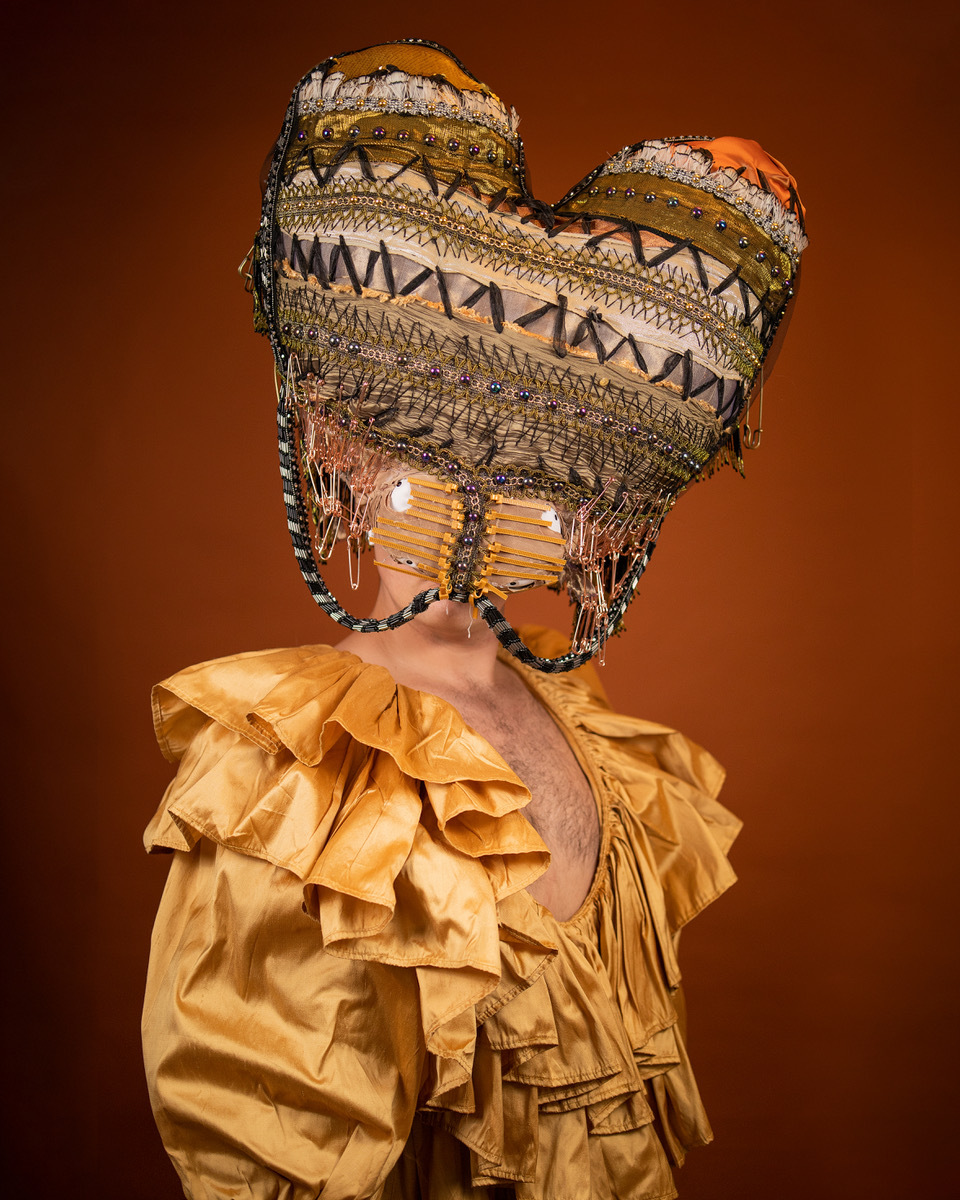
In addition to thoughtful, processional mythologies, your films portray a celebration of queerness as a revolutionary, liberatory experience, almost like as a utopic vision of the future, both within the LGBTQIA+ community and outside of it. Can you talk about how or whether those ideas find themselves woven into The Nomad?
It's really interesting, because I grew up Catholic in this sort of very Catholic country that is completely covered in churches, beautiful historic churches with all kinds of ornaments, all kinds of religious imagery. The streets in Madrid are all named after saints and all kinds of visuals that relate to Catholicism. The truth is that all those images are intended to only speak to cliques, to speak to the universal population with the hope of bringing people into Catholicism. However, there's no attempt at excluding those of them who are not Catholic, they're telling narratives that people will most likely relate to, in one way or another.
The interesting thing is that telling stories about queer people are exactly the same way. Feeling neglected by your family or feeling neglected in general is not something that only two or three people have experienced. And not that I've made any kind of work about the trivialization of picking on someone, but I do think that the queer experience is just another human experience. The queerness of it is something that might be specific to some, but then you don't need to live it in order to relate to it. You can not be a part of it, and that's perfectly fine.
How does queer identity fit into how you tell stories in The Nomad?
I do think that in that sense, the discussing queer identity, the way that I do it, sort of put into practice what I know of, so not to speak out of my own experience. But I also think that my exploration of hookup apps in The Pantheon is not necessarily anything that I don't think any straight person might not be able to relate to. Because the themes that I discuss are universal, they obviously have the aesthetics of an app that is mostly about men having sex with men. But the reality behind it is much more universal than the specificity of the aesthetics.
And that relates a little bit to The Nomad, in The Pantheon, it was a pantheon of these mythological creatures, of these deities that spoke to very specific parts of queer culture, whether it was transphobia within the queer community, or whether it was like gay male hookup apps, or whether it was the gender non-binary, and our association of gender to objects, or lack of association of gender and objects, and how memories are, when you see an object of an important marker in your life, you don't really think of that object as having a gender. However, if you collected all the objects that have been important to you throughout your life, would those reveal maleness or femaleness? Or would it matter? Because the memories attached to those objects are far more meaningful than the gender associated with yourself, with your memory it's up for debate because both answers are correct.
Ultimately, what I'm trying to say is the value is in the memory, not so much on the gender. With The Nomad, I still continued to work with mythology. And we're going to see in the film a nomad who is a goddess. She lives in this nomadic machine in which she is the matriarch, and she is the matriarch among a community of women who have a mission themselves to repopulate the planet with seeds and spores.
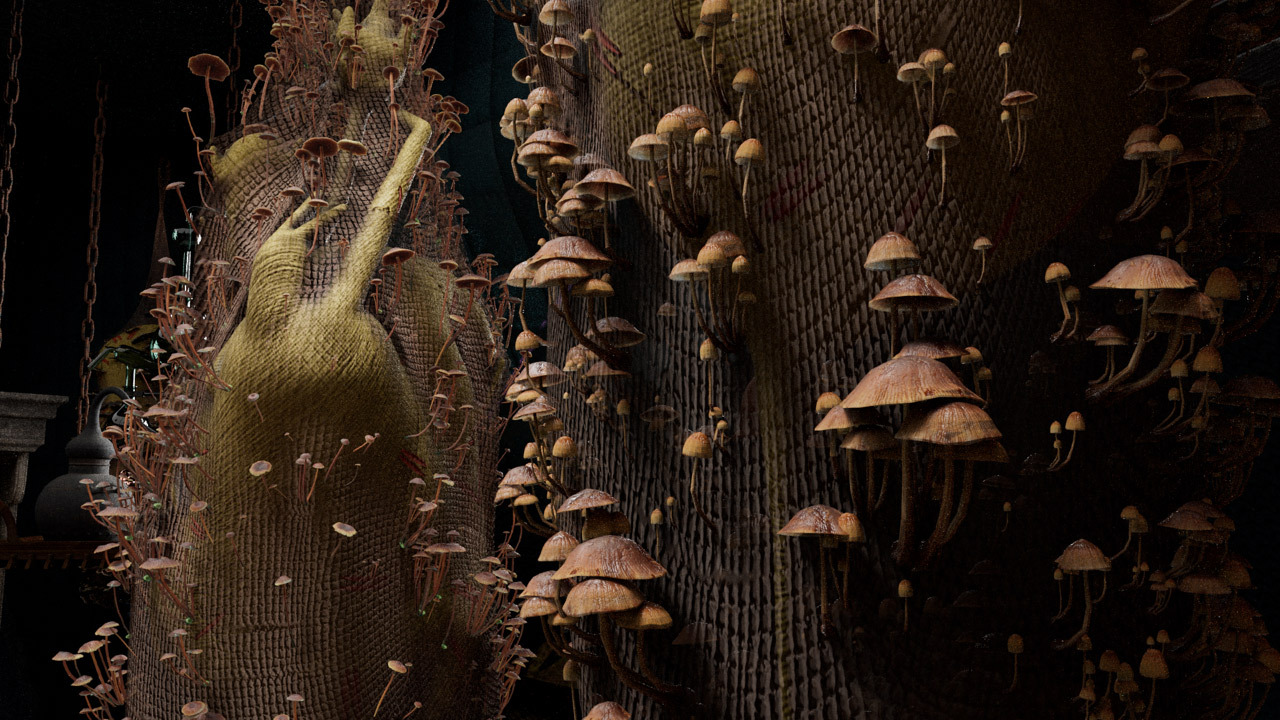
What other kinds of themes are you exploring with this film?
I think that an interesting exploration of our time is issues of patriarchy in a context of late-stage capitalism, where we are destroying our planet. Decisions are almost exclusively economically driven. There's very little regard for the planet, for the continuation of our species, for the continuation of any other species, really. And so ultimately feminist theory would say that matriarchy would have things be happening a different way. And in that, this machine that we're going to see in this film is a really interesting physical creature, almost, that is not documentary. I'm not claiming to have designed a machine that will resolve climate change. What I'm trying to say the questions that I present have to do with the way that we think about land ownership, of land preservation, the way that we think about systems of governance.
I'm not saying this in a sort of very cold, hard, kind of serious way, I'm presenting this speculative fiction of this nomadic machine that travels around spreading seeds and spores, for the re-population of vegetation on this planet. Native American matriarchies hold the idea that land can't be owned, we are guests of this land, therefore, land ownership is directly in conflict with the preservation of the planet. Therefore, a nomadic community of women that are traveling around spreading seeds and having a nomadic lifestyle with little impact on the planet, is a beautiful allegory of a very simple solution. Not a very simple solution, a very whimsical solution to a problem that is much more serious than what we will present in the film.
I'm excited to learn more about the film and see it and the screening, and I'm glad that you're participating in this series.
I'm so excited because I'm working with two incredible women with whom I've collaborated on this film, who are also SCI-Arc alumni. Their names are Michelle Recio and Miwa Espinoza. I've created and directed the whole thing, and sort of done the research and told the story. They are phenomenal women who have been much more hands on with the design of the machine itself. This has been a really great way for us to put in what I know and what I do with what they do, and we've become really close friends in the process. I'm ecstatic having them as partners in this film.
It's been an incredible experience, because we all speak the same aesthetic language. We're also much more committed to creating scenarios that don't specifically speak to architecture, that don't really speak to art, even, but that simply speak to folklore, culture, storytelling, world building.